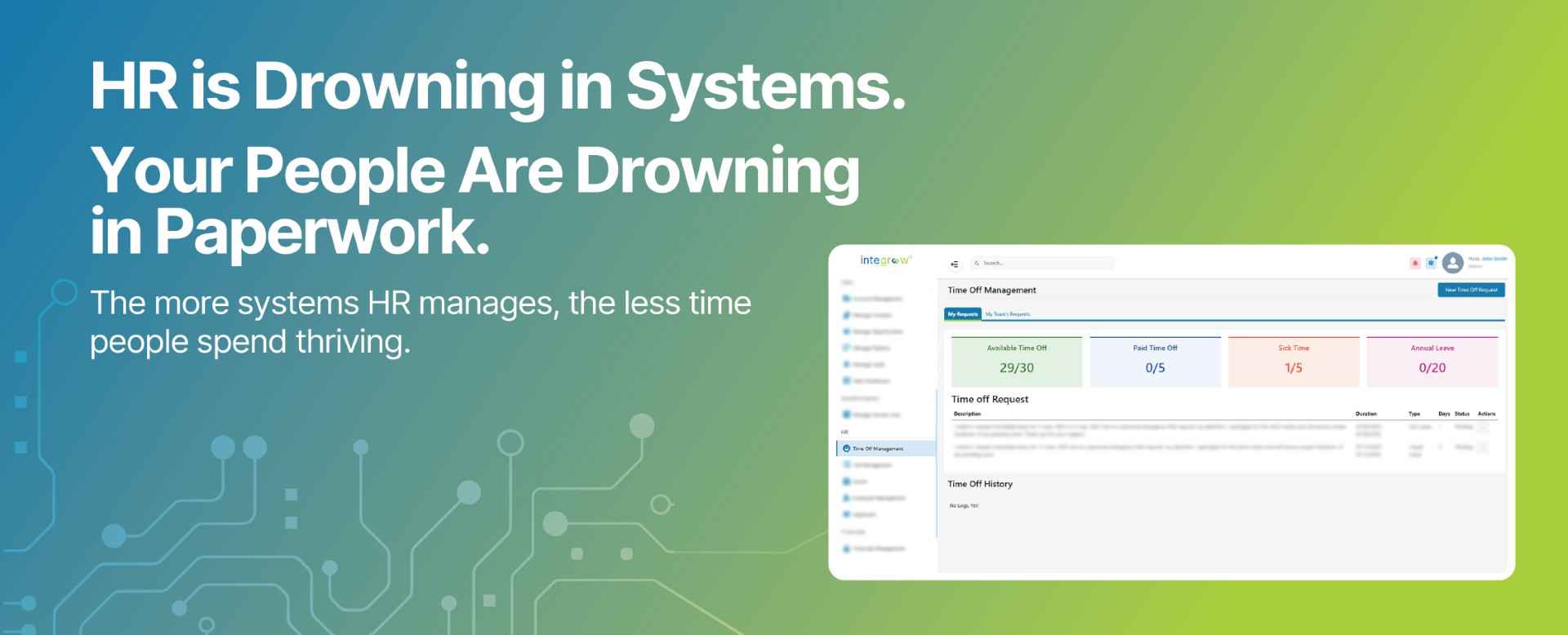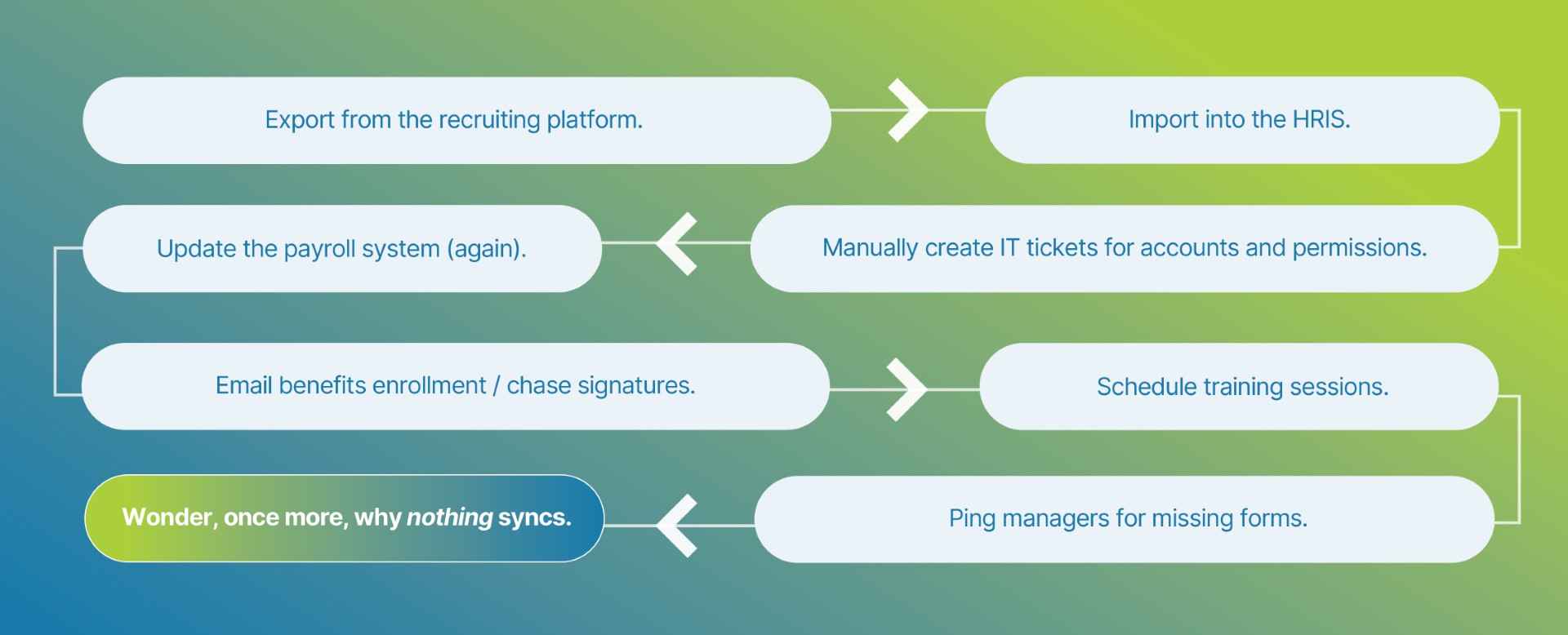
Table of Contents
ToggleHR is Drowning in Systems. Your People Are Drowning in Paperwork.
The more systems HR manages, the less time people spend thriving.
Here’s the stitch:
New hire on Day 5: “I still can’t access half the tools I need.”
HR: “We’re working on it.”
Translation: Eight different systems are being updated manually.
This is an expensive recipe for burnout, downtime, and overall lag. What’s the solution?
The HR Stack of Sadness
Individually, each tool solves a problem. Together, they create one: duplicated data, manual handoffs, and access that never seems to land on time.
- Recruiting: System #1
- Onboarding: System #2
- Payroll: System #3
- Benefits: System #4
- Performance: System #5
- Time tracking: System #6
- Training: System #7
- IT provisioning: System #8
When nothing talks to anything else, HR becomes the human API, copying, pasting, and hoping it all lines up.
Monday in HR (A Short Horror Story)
The week starts with good intentions and a lot of tab switching:

By lunch, three systems are up to date, two are lagging, and your new hire still can’t log into what they need.
The Human Cost
It’s a big deal how new hires feel the first week. It can’t (and shouldn’t) just be written off as “operational drag.”
On Day 1, new hires should hear “welcome aboard,” not “please hold.” When access drips out over days, onboarding stretches 40% longer, and those first two weeks get spent waiting instead of doing. HR, which is meant to be visible, trusted, and human, ends up spending 60% of its time pushing data between systems. Small mismatches turn into compliance gaps. Confidence wobbles. And some great people decide this isn’t the place for them and they leave during onboarding because the basics aren’t working.
When the first week feels broken, trust takes weeks to rebuild– if it ever does. Fix the experience, and you retain the people you worked so hard to hire.
Real Numbers from Real Companies
Pull the thread and the costs show up fast:
- 75-person company: 312 hours/month sunk into HR admin
- Annual cost of manual processes: $125K
- Average systems per employee lifecycle: 8
- Time to fully provision a new hire: 5 days
Multiply that by headcount growth, and you’ve got a culture risk wrapped in operations.
Why This Keeps Happening
Most teams buy tools to fix moments (recruiting, payroll, training), not the journey. Data that should move once ends up moving eight times. Every “quick workaround” becomes another manual step. The more systems you add, the more HR becomes the glue and the slower everything moves.
It’s not sustainable, and it is fixable– so why suffer?
What Unified HR Actually Looks Like
One motion from offer to productive. In practice, that means:
- Hire-to-retire in one system
- Automatic IT provisioning the moment an offer is accepted
- Real-time headcount and org data across HR, IT, and finance
- Compliance without chaos—policies, docs, and audits in sync
- HR doing strategy, not data entry
Results
Teams that unify see:
- 40% faster onboarding
- 5 days → same-day access
- 60% less HR admin time


